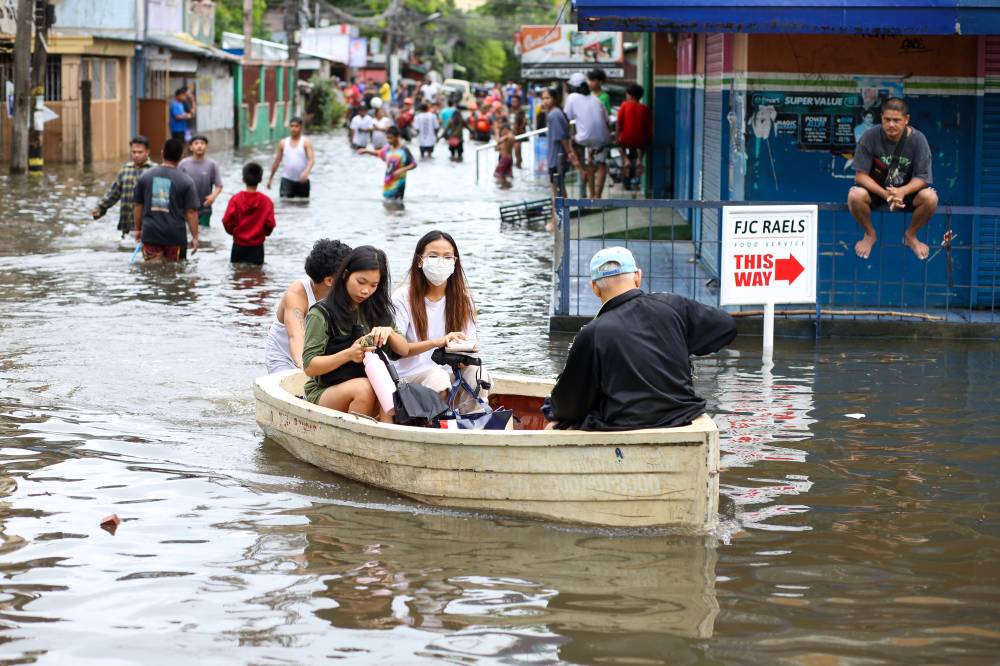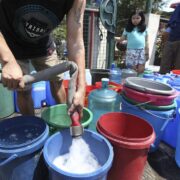In Bicol, ‘Enteng’ agri losses breach P350M
- Rice, high-value crops in 8,893 hectares of farmlands in region damaged by heavy rains, floods

LIGAO CITY–Tropical Storm “Enteng” (international name: Yagi) left over P350-million worth of agriculture losses in Bicol as widespread flooding caused by heavy rains submerged farmlands in the region on Sunday.
Lovella Guarin, Department of Agriculture Bicol information officer, told the Inquirer in a private message on Wednesday that 13,623 farmers and fishermen in the region had been affected by the storm, with production losses estimated at 14,814 metric tons (MT) spanning 8,893 hectares of land planted to rice and vegetables.
“We will provide all resources (to affected farmers). The buffer stock of seeds for rice, corn, and vegetables is always ready and available. Farmers need to report their losses to municipal agriculture offices,” Guarin said.
She said Philippine Crop Insurance Corp. could assist farmers through crop insurance claims.
Rice was mostly affected by Enteng, comprising 94.93 percent or P333.08 million of the total damage. It wiped out 13,887 MT of rice produce covering 8,513 hectares of land, mostly in reproductive and maturity stages.
Corn (P14.01 million) and high-value crops (P3.76 million) incurred losses as well. Among farmlands damaged by the storm were planted to eggplant, squash, ampalaya, okra, pole sitao, tomato, hot pepper, bottle gourd, pechay and cucumber.
According to Gaudencio de Vera, regional manager of the National Irrigation Administration (NIA) regional office, clearing and desilting work for irrigation canals is in progress to prevent disruption of water flow after the storm.
Before Enteng entered the country, the agriculture sector posted P4.73 billion in losses last month due to the combined effects of the southwest monsoon (“habagat”) and Supertyphoon “Carina” (international name: Gaemi).
Moreover, the extreme heat and lack of rain caused by the El Niño phenomenon resulted in the sector recording losses worth P9.89 billion in June.

Unusual, sudden
Meanwhile, residents in areas hit by flooding during Enteng’s onslaught blamed new infrastructure projects for their predicament.
Donna Tinio, a resident of Bororan village in Donsol, Sorsogon, said their village was not included in the Office of Civil Defense’s list of flooded villages, but she insisted that they were also affected.
“We usually stay at home during storms because we were never flooded,” Tinio told the Inquirer on Tuesday.
She called the incident “the worst experience” because all of their belongings were drenched by the unexpected flooding.
Tinio blamed the new drainage project that was recently completed in their village, saying that she feared that this would be their new normal.
In Tinanogan village, also in Donsol, resident Edward Briones said that before the construction of a road in their village, only certain parts of their community were flooded during storms.
In Naga City, resident Cyril Librando, 36, told the Inquirer that although Mabolo village had experienced flooding in the past, the rise of floodwater was faster with Enteng.
“We experienced heavy rains at about 5 p.m. and the water started rising around 5:30 p.m.,” she said, adding that floodwaters usually subside immediately “before there were any buildings” in their area.
In Tinago village, the local book store Savage Mind was not spared from the flood.
Owner Kristian Cordero told Inquirer in an interview Tuesday that this was the second time that the shop was hit by floods.
“Since April, we reported (to the local government unit) that we do not have a good drainage system. We did not receive any response,” Cordero told the Inquirer.
Savage Mind incurred P300,000 worth of damage, including rare books.
Cordero said they were initially planning to put up a museum of books, “but all are gone for now.”





















